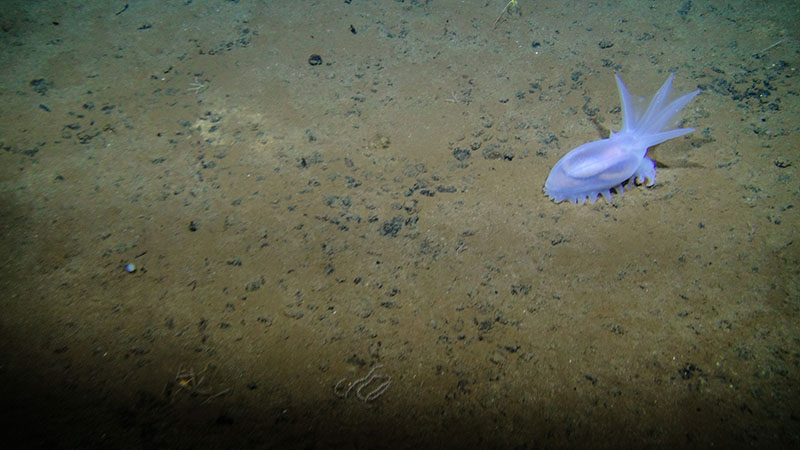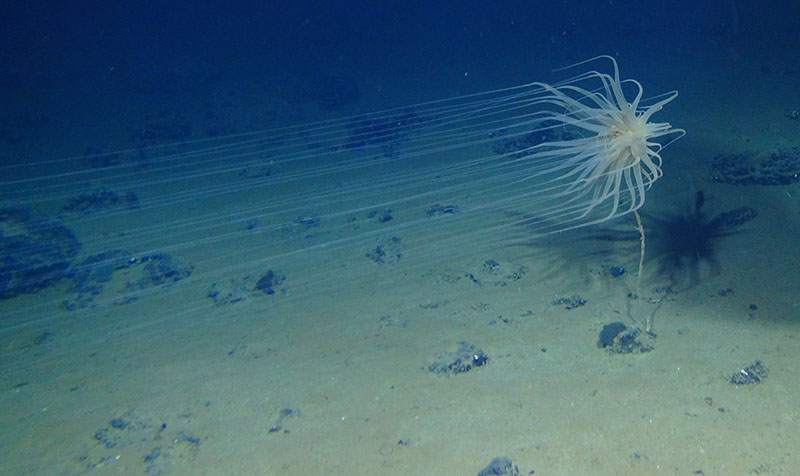

Sea cucumber Amperima sp. on the seabed in the eastern Clarion-Clipperton Fracture Zone. Image courtesy of Craig Smith and Diva Amon, ABYSSLINE Project. Download larger version (jpg, 8.1 MB).
Polymetallic nodules are a potential mineral resource for copper, nickel, cobalt, iron, manganese, and rare earth elements—metals that are becoming important for modern life, since they are used in making electronics like rechargeable batteries and touch screens, among other things. These nodules are found in various deep ocean regions, including the deep Pacific and Indian Oceans.
The nodules of greatest mining interest are approximately potato-sized, and sit on the sediment surface across abyssal plains in the Clarion-Clipperton Zone (CCZ), a region spanning 5,000 kilometers (3,100 miles) across the central Pacific Ocean, at depths of ~4,000 - 5,500 meters (12,000 - 18,000 feet).

Relicanthus sp.—a new species from a new order of Cnidaria collected at 4,100 meters in the Clarion-Clipperton Fracture Zone (CCZ) that lives on sponge stalks attached to nodules. Image courtesy of Craig Smith and Diva Amon, ABYSSLINE Project. Download larger version (jpg, 2 MB).
The deep-sea mining industry is developing specialized underwater mining technology to harvest this remotely-located mineral resource from thousands of square kilometers of seafloor, which will involve collecting the nodules at the seabed and bringing them up to a ship for transport to land. Mining of these nodules could result in the destruction of life and the seabed habitat in the mined areas, which has been simulated in the eastern Pacific. Because the CCZ is outside national jurisdiction, deep-sea mining in this region is regulated by the International Seabed Authority . Currently, contracts for mining exploration in the CCZ have been granted to 16 deep-sea mining contractors, with exploration areas covering approximately 1 million square kilometers (400,000 square miles).
The International Seabed Authority has designated nine areas as Areas of Particular Environmental Interest (APEIs), which are currently protected from mining activities. These areas each cover ~160,000 square kilometers (61,775 square miles) and are located around the exploration license areas. The APEIs were placed across the CCZ to protect and represent the full range of biodiversity and habitats in the region, including variations in nodule abundances, food availability, and seafloor topography (including the presence of seamounts).
The easternmost APEIs have been sampled as part of previous environmental projects, such as MIDAS and ABYSSLINE . We will visit the three westernmost APEIs, which have not yet been investigated, to explore their biodiversity and determine whether they represent habitats found in areas in the CCZ targeted for mining.